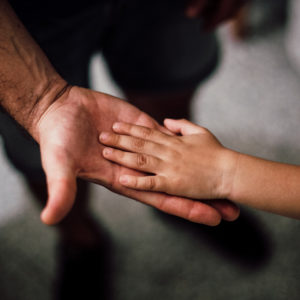 (image courtesy: Pexels )
(image courtesy: Pexels )Family Travel Safety Tips: Creating Unforgettable Memories Securely
Traveling abroad as a family is an adventure filled with unforgettable moments, but safety must come first. By following essential family travel safety tips, you can ensure your international experience is both exciting and secure.
Whether you’re exploring ancient ruins, strolling through bustling city streets, or enjoying a peaceful countryside retreat, keeping your family safe should be a top priority. With the right preparation and a few essential tips, your family’s international adventure can be both thrilling and safe.
Family Travel Safety Tips: Preparing for the Journey
The foundation of a safe international journey begins long before you step on a plane. Thoughtful preparation can help you navigate potential challenges and ensure that you have the necessary tools at hand to handle emergencies abroad.
Check Travel Advisories and Local Laws
Before deciding on your destination, it’s crucial to research current travel advisories. These advisories, issued by your country’s government, provide important information on political instability, natural disasters, and health risks in different countries. They also highlight regions where travel is deemed unsafe due to crime or civil unrest.
Alongside this, it’s important to understand the local laws of your destination. This will help you avoid inadvertently breaking any laws, which could result in unexpected fines or, in some cases, imprisonment. This research is especially important when traveling with children, as different countries have varying rules on everything from child safety in vehicles to vaccination requirements.
Get the Right Insurance
A critical step in planning your family’s trip abroad is securing travel insurance. Comprehensive travel insurance covers everything from medical emergencies to lost baggage. This is especially important when traveling with children, as medical care abroad can be expensive and difficult to navigate.
Ensure your policy includes emergency evacuation, as well as coverage for any activities your family may engage in, such as hiking, skiing, or scuba diving. Review your health insurance plan to see if it provides any international coverage. If not, you’ll need to purchase additional health insurance to protect your family in case of illness or injury.

Keeping Your Family Safe in Transit
Once the planning phase is complete, it’s time to focus on staying safe while you travel. Whether you’re flying, driving, or taking public transportation, traveling with kids can be a challenge. Here’s how to make the transit process as smooth and safe as possible.
Family Travel Safety Tips for Airports and Long Flights
International airports can be overwhelming for both adults and children, with crowds, security checkpoints, and long waits. To make this process easier, talk to your kids beforehand about what to expect. Encourage them to stay close, especially during busy times like security checks and boarding.
Consider getting wristbands or GPS trackers for younger children, especially in large airports where it’s easy for them to wander off. A phone built with a priority on child safety can also be a great tool for ensuring your child stays connected in case you get separated. These phones offer limited features, ensuring kids can only contact approved numbers, providing peace of mind without the distractions of a traditional smartphone.
For long-haul flights, pack essentials like snacks, games, and comfort items for your children. Bring antibacterial wipes and hand sanitizers to reduce the risk of germs, especially during flu season. And always be sure to stretch and move around the plane during long flights to prevent stiffness and blood clots.
Choosing Safe Ground Transportation
Once you’ve arrived at your destination, the next challenge is navigating ground transportation safely. In many countries, public transport systems like buses and trains are common and affordable options. However, not all countries have strict safety regulations, so it’s important to be cautious.
If you’re renting a car, ensure it’s equipped with functioning seatbelts and appropriate child safety seats. Check the car’s condition before driving off, including the brakes, headlights, and tires. In countries with different traffic rules, take extra care to familiarize yourself with local driving laws and road signs. You can also rely on apps to provide real-time traffic updates and suggest safer routes.
Public transportation can also be a viable option, but keep an eye on your belongings and choose reputable services. In busy cities, pickpockets and scams targeting tourists are common, so be mindful of your family’s valuables and keep them secure. Avoid taking rides from unlicensed taxis or using transportation services that seem unsafe or overly aggressive.
Staying Safe in Unfamiliar Environments
Exploring new environments, from crowded cities to remote natural landscapes, can be thrilling. However, unfamiliar surroundings also pose risks, especially for families with young children.
City Exploration: Family Travel Safety Tips in Urban Areas
Big cities are often top destinations for families, offering museums, parks, and cultural landmarks. However, they can also be the site of accidents, petty crime, and safety hazards. When exploring busy areas, keep a close watch on your children. It’s helpful to establish a buddy system or create specific meeting points in case someone gets lost.
If your children are old enough to explore on their own for short periods, ensure they know how to navigate the local transit system and understand basic safety rules. In many cities, bicycles and scooters are available for rent, but it’s important to use them responsibly. Ensure everyone in your family wears helmets and obeys traffic rules to avoid accidents.
Discuss the potential legal consequences of accidents before engaging in activities that carry higher risk. Whether biking through city streets or taking part in adventure sports, it’s crucial to know your rights and responsibilities in a foreign country.

Adventure Travel: Nature-Based Family Travel Safety Tips
For families seeking outdoor adventures, hiking, snorkeling, and wildlife safaris can be incredible experiences. However, nature-based activities come with their own set of risks. When hiking, research the difficulty of the trails and bring adequate supplies, such as water, first-aid kits, and maps. Make sure your children understand the importance of sticking to designated paths and not wandering off.
If you’re venturing into remote areas, always check weather forecasts and local advisories before setting out. Inform someone about your itinerary in case of emergencies. Additionally, it’s important to make sure everyone is properly equipped with the right footwear and clothing to minimize injuries.
For water-based activities like swimming or snorkeling, ensure everyone in the family knows basic water safety. Choose beaches or swimming areas that are lifeguarded, and always stay within the designated safe zones. If you plan to participate in boating or kayaking, everyone should wear life jackets, regardless of their swimming ability.
Protecting Health While Traveling
Health is one of the most important aspects of travel safety, especially when it comes to children. Exposure to new environments, different foods, and changing weather conditions can put stress on the immune system, making it easier to fall ill.
Vaccinations and Health Precautions
Before your trip, check with your family doctor to ensure that your children are up-to-date on all necessary vaccinations. Some countries may require specific vaccines, such as those for yellow fever or typhoid, before entering. It’s also worth discussing preventative medications, such as anti-malarial tablets, if you’re traveling to regions where certain diseases are prevalent.
Packing a basic first-aid kit is essential for any trip. It should include bandages, antiseptic wipes, pain relievers, and medications for common ailments like colds or upset stomachs. If anyone in the family takes prescription medications, ensure you bring enough for the entire trip, as it can be challenging to find equivalent medications abroad.
Managing Food and Water Safety
One of the highlights of international travel is trying new cuisines, but food and water safety should be top of mind. To avoid foodborne illnesses, stick to well-known restaurants or those recommended by trusted sources. Avoid street food in areas where hygiene practices are questionable, and always ensure that meat is fully cooked before consumption.
Water quality can vary dramatically from one country to another. In some destinations, it’s safer to drink bottled water than tap water. Be cautious with ice, as it may not always be made from purified water, and encourage your children to drink from safe sources only.
Wrapping Up Your Journey
After an incredible trip, the final stage of your adventure involves returning home safely. Be sure to account for time zone changes and jet lag, which can affect everyone in the family differently. Encourage your children to rest, stay hydrated, and get back into their normal routines gradually.
Throughout your family’s international journey, careful planning, vigilance, and the right tools will help ensure everyone’s safety. While adventure awaits around every corner, being prepared for the unexpected will help you and your family enjoy a worry-free trip filled with unforgettable memories.
Do you have a family adventure story to share? Drop us a comment below!














